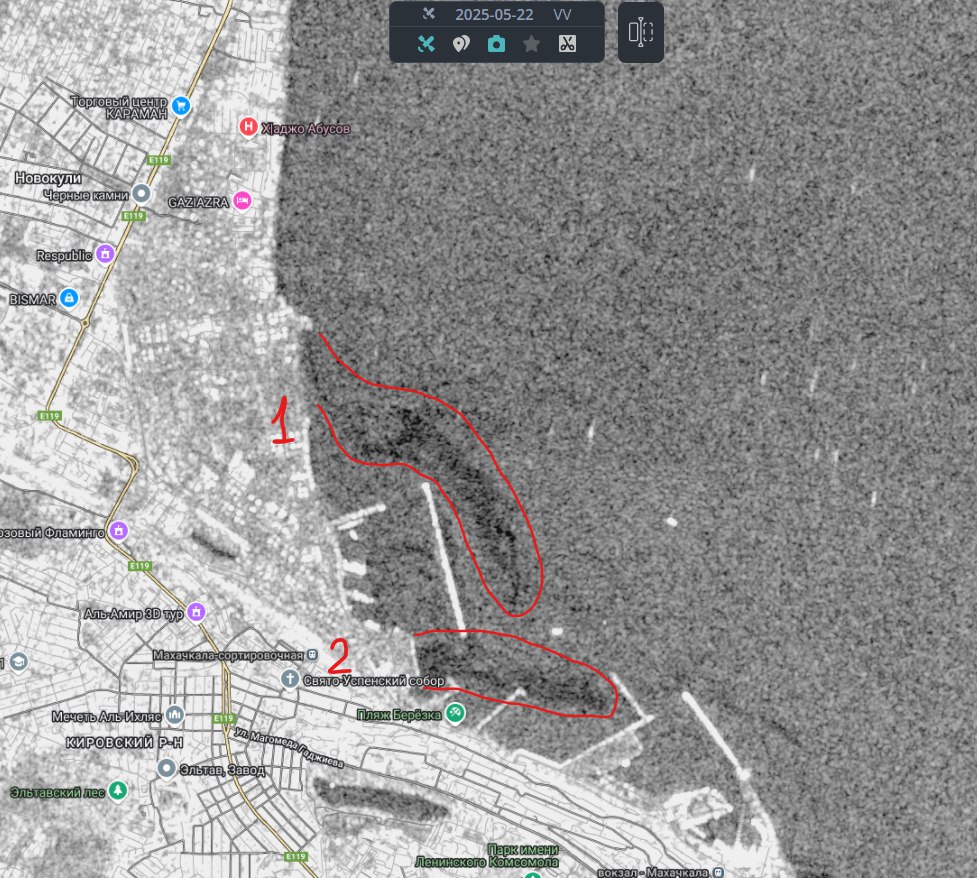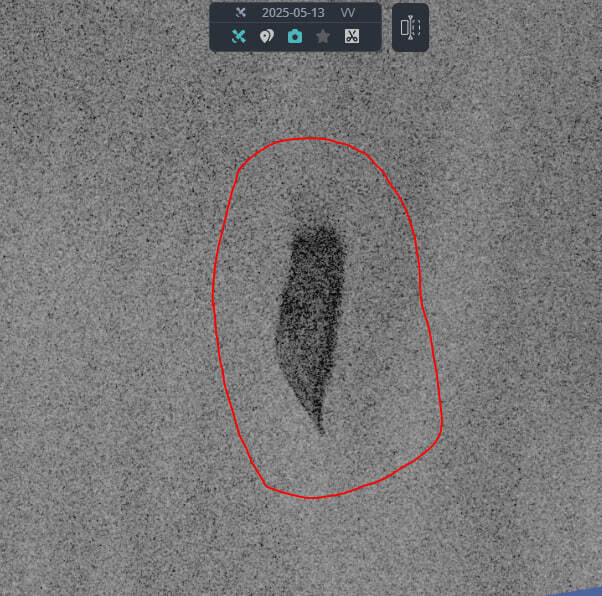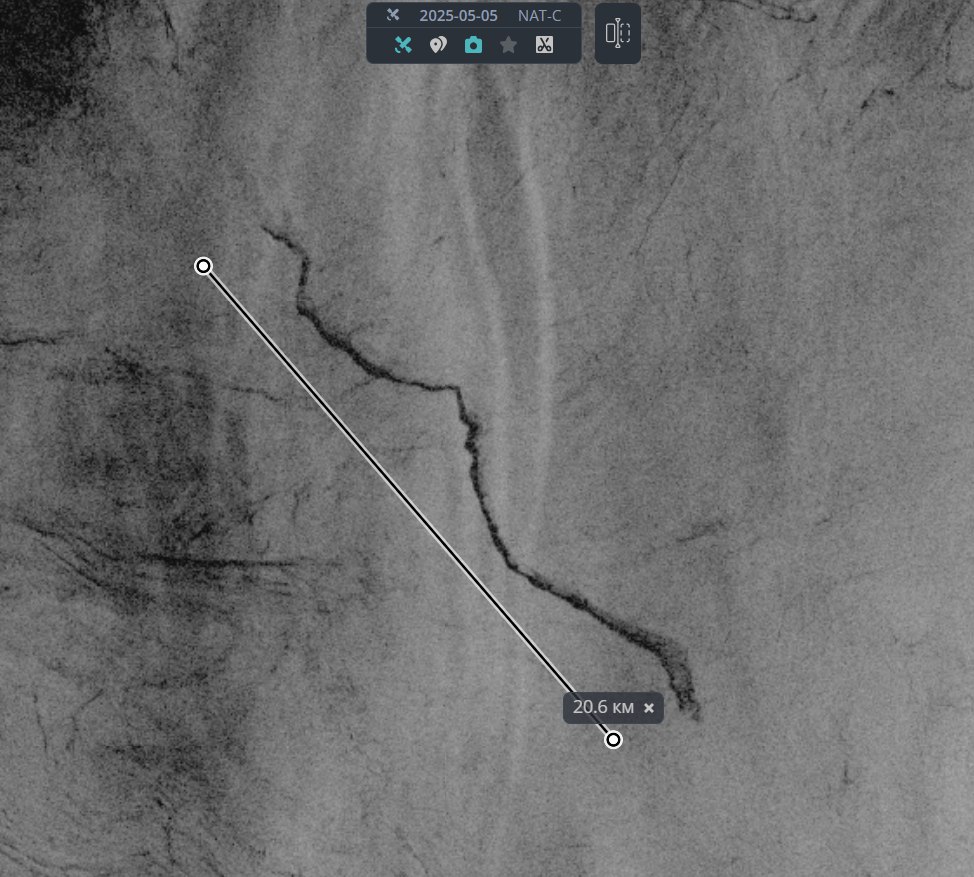PRESS RELEASE
Caspian Sea: Satellites Detect Oil Slicks Weekly
ASTANA, KAZAKHSTAN – Since early May 2025, Sentinel-1A and Sentinel-1C satellites have been detecting new oil-containing slicks in the Caspian Sea on a weekly basis. This was reported by the Save the Caspian Sea global environmental movement, citing data from the Transparent World in the Caspian project.
As of June 23, approximately 40 slicks covering a total area of more than 64 square kilometers have been identified in both coastal zones and open waters. Pollution has been recorded in the sectors belonging to Kazakhstan, Azerbaijan, Russia, and Turkmenistan.
Despite the ongoing pollution, there has been no public information regarding any response from the relevant authorities. In this context, on June 13, 2025, Save the Caspian Sea founder Vadim Ni submitted an official request to Kazakhstan’s Ministry of Ecology and Natural Resources, asking whether government satellite monitoring is in place, whether these incidents have been officially recorded, if there is a tracking and response plan for pollution events, and whether maritime activity in Kazakhstan’s sector is being monitored. As of publication, no official response has been received.
“We cannot afford continuous pollution of the Caspian’s fragile ecosystem. Modern technologies allow for timely detection and elimination of oil spills, including those caused by ballast water discharge. Our movement demands that government bodies take urgent action to implement immediate response measures for oil spills in the Caspian Sea,” said Vadim Ni.
According to data from May, June 2025, at least 7 pollution events were recorded in Kazakhstan’s sector, with a total area of 18 square kilometers. In the Russian sector, 25 slicks were found, covering around 14 square kilometers. Azerbaijan’s sector recorded 5 incidents totaling 28.8 square kilometers. Additionally, two slicks with a combined area of 4.1 square kilometers were detected in Turkmenistan’s sector.
“The issue isn’t just a single spill, but the cumulative impact. Continuous, real-time satellite monitoring of the Caspian Sea enables not only prompt responses to emergencies, but also helps scientists track long-term human-induced pressure on the marine ecosystem. It’s a perspective that simply can’t be gained any other way,” said Andrey Balagurov, coordinator of the Transparent World in the Caspian project.
Earlier, in April, 15 oil-containing slicks were recorded, covering about 32 square kilometers in total. It’s important to note that the cumulative effect of even small slicks can severely damage the ecosystem, disrupting gas exchange and harming fish, seabirds, and plankton.
Background:
Monitoring is carried out using satellite data from Sentinel-1A and Sentinel-1C, as well as the CLASS.PRO platform developed using methodologies from the Shirshov Institute of Oceanology (Russian Academy of Sciences). The project involves Lorette LLC, the Raimet Research and Production Foundation, and the Ctrl2GO group. Results are publicly available at transparentworld.tech.
Caspian Sea: Satellites Detect Oil Slicks Weekly
ASTANA, KAZAKHSTAN – Since early May 2025, Sentinel-1A and Sentinel-1C satellites have been detecting new oil-containing slicks in the Caspian Sea on a weekly basis. This was reported by the Save the Caspian Sea global environmental movement, citing data from the Transparent World in the Caspian project.
As of June 23, approximately 40 slicks covering a total area of more than 64 square kilometers have been identified in both coastal zones and open waters. Pollution has been recorded in the sectors belonging to Kazakhstan, Azerbaijan, Russia, and Turkmenistan.
Despite the ongoing pollution, there has been no public information regarding any response from the relevant authorities. In this context, on June 13, 2025, Save the Caspian Sea founder Vadim Ni submitted an official request to Kazakhstan’s Ministry of Ecology and Natural Resources, asking whether government satellite monitoring is in place, whether these incidents have been officially recorded, if there is a tracking and response plan for pollution events, and whether maritime activity in Kazakhstan’s sector is being monitored. As of publication, no official response has been received.
“We cannot afford continuous pollution of the Caspian’s fragile ecosystem. Modern technologies allow for timely detection and elimination of oil spills, including those caused by ballast water discharge. Our movement demands that government bodies take urgent action to implement immediate response measures for oil spills in the Caspian Sea,” said Vadim Ni.
According to data from May, June 2025, at least 7 pollution events were recorded in Kazakhstan’s sector, with a total area of 18 square kilometers. In the Russian sector, 25 slicks were found, covering around 14 square kilometers. Azerbaijan’s sector recorded 5 incidents totaling 28.8 square kilometers. Additionally, two slicks with a combined area of 4.1 square kilometers were detected in Turkmenistan’s sector.
“The issue isn’t just a single spill, but the cumulative impact. Continuous, real-time satellite monitoring of the Caspian Sea enables not only prompt responses to emergencies, but also helps scientists track long-term human-induced pressure on the marine ecosystem. It’s a perspective that simply can’t be gained any other way,” said Andrey Balagurov, coordinator of the Transparent World in the Caspian project.
Earlier, in April, 15 oil-containing slicks were recorded, covering about 32 square kilometers in total. It’s important to note that the cumulative effect of even small slicks can severely damage the ecosystem, disrupting gas exchange and harming fish, seabirds, and plankton.
Background:
Monitoring is carried out using satellite data from Sentinel-1A and Sentinel-1C, as well as the CLASS.PRO platform developed using methodologies from the Shirshov Institute of Oceanology (Russian Academy of Sciences). The project involves Lorette LLC, the Raimet Research and Production Foundation, and the Ctrl2GO group. Results are publicly available at transparentworld.tech.



